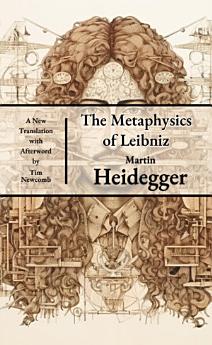The Metaphysics of Leibniz
maig del 2024 · The Collected Early Works of Martin Heidegger Llibre 23 · Minerva Heritage Press
Llibre electrònic
90
Pàgines
family_home
Apte
info
reportNo es verifiquen les puntuacions ni les ressenyes Més informació
Sobre aquest llibre
A new translation of Martin Heidegger's early work "The Metaphysics of Leibniz", originally published in 1923 as the last of his Marburg lectures. This edition contains a new afterword by the Translator, a timeline of Heidegger's life and works, a philosophic index of core Heideggerian concepts and a guide for terminology across 19th and 20th century Existentialists. This translation is designed for readability and accessibility to Heidegger's enigmatic and dense philosophy. Complex and specific philosophic terms are translated as literally as possible and academic footnotes have been removed to ensure easy reading. This lecture was given in the summer semester of 1928 as an examination of Leibniz. The first Marburg semester of 1923/24 dared the corresponding discussion with Descartes, which was then included in "Being and Time" (§§ 19-21), and here he concludes his series on Continental Metaphysics. Heidegger focuses on the essential qualities of the monad, especially its aspects as "vis primitiva," "substantia," and "monas," and how these elements contribute to the understanding of being and substance in Leibniz's philosophy. Heidegger interprets the monad as a fundamental unit of being that encompasses both unity and multiplicity, a concept deeply rooted in Leibniz's metaphysics. In doing so, he engages with the concept of the "substantiality of substance" and examines the nature of being as understood by Leibniz and its implications for the broader philosophical discourse. Heidegger's analysis delves into the dynamic nature of the monad, characterized by its inherent "urge" ("Drang") and its ability to unify and manifest reality. He closely examines the relationship between the monad's internal structure and its external expression in the world, emphasizing Leibniz's distinction between the internal and external aspects of being. This discussion extends to the metaphysical implications of monadology, where Heidegger addresses how individual monads reflect the complexity and diversity of the universe.
Sobre l'autor
Martin Heidegger (1889-1976) was a German philosopher and one of the most influential thinkers of the 20th century, particularly in the fields of phenomenology, existentialism and Ontochronology. His seminal work, Being and Time (Sein und Zeit), introduces the concept of "Dasein," or "being-there," as a way to explore the nature of human existence, focusing on temporality and the meaning of being. Heidegger challenged traditional Western metaphysics by emphasizing the situatedness of human beings within their world, a concept he described as "being-in-the-world." Though his brief association with the Nazi party has cast a shadow over his legacy, Heidegger's ideas have profoundly impacted disciplines such as philosophy, psychology, literature, and theology. His critiques of technology and "technological thinking" continue to resonate in contemporary discussions on modernity, alienation, and the essence of human existence.
Puntua aquest llibre electrònic
Dona'ns la teva opinió.
Informació de lectura
Telèfons intel·ligents i tauletes
Instal·la l'aplicació Google Play Llibres per a Android i per a iPad i iPhone. Aquesta aplicació se sincronitza automàticament amb el compte i et permet llegir llibres en línia o sense connexió a qualsevol lloc.
Ordinadors portàtils i ordinadors de taula
Pots escoltar els audiollibres que has comprat a Google Play amb el navegador web de l'ordinador.
Lectors de llibres electrònics i altres dispositius
Per llegir en dispositius de tinta electrònica, com ara lectors de llibres electrònics Kobo, hauràs de baixar un fitxer i transferir-lo al dispositiu. Segueix les instruccions detallades del Centre d'ajuda per transferir els fitxers a lectors de llibres electrònics compatibles.











